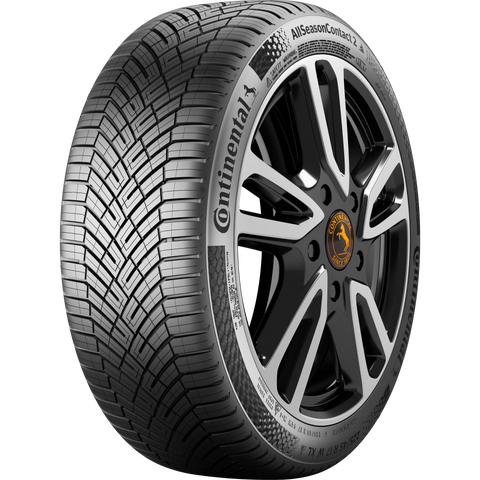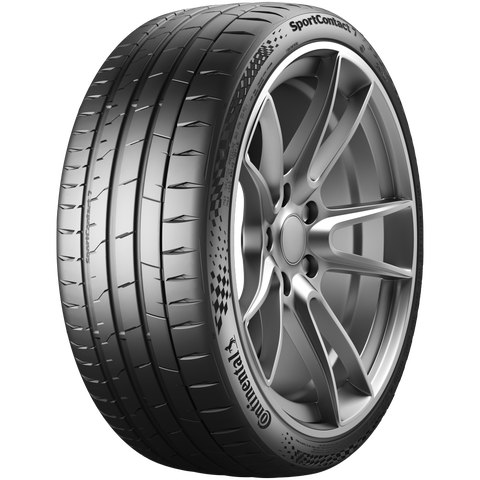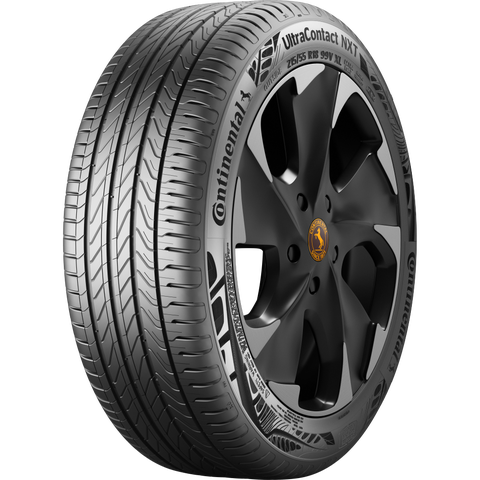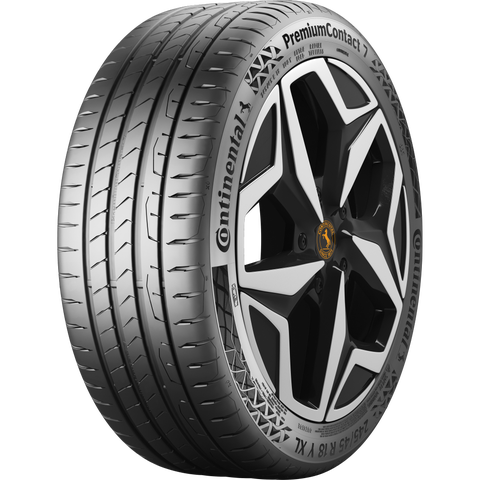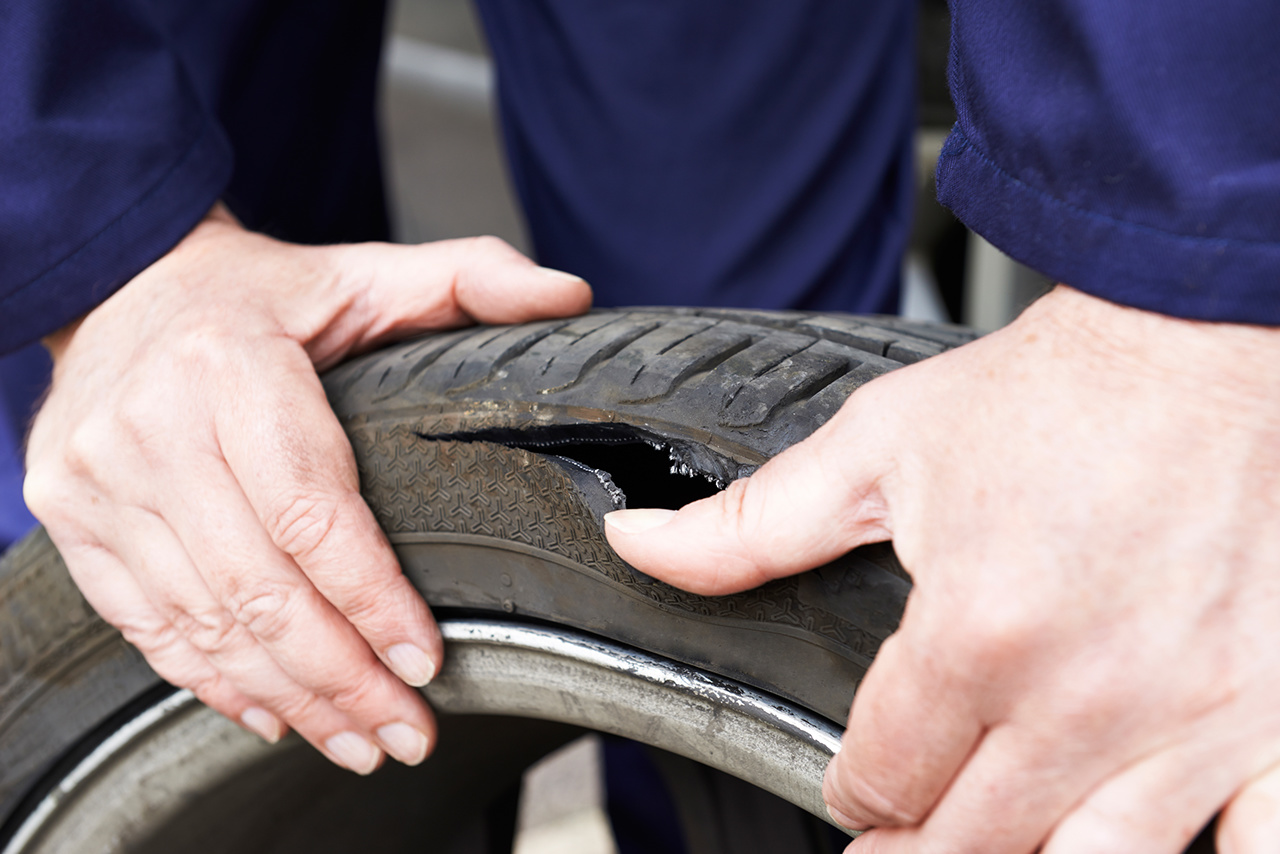
Visit Continental Tires in your country for local vehicle fitment
# Tire Knowledge
Braking distance
All you need to know
Braking distance: why it matters and how to reduce it
Braking distance is one of the most important factors in road safety, yet it is often misunderstood or underestimated. Every time you apply the brakes, the distance your vehicle travels before coming to a complete stop can mean the difference between a close call and a serious accident. In this blog post, we’ll look at what braking distance is, the factors that affect it, and how you can minimize it to stay safe on the road.

Braking distance is the distance a vehicle travels from the moment the brakes are applied until it comes to a complete stop. Keep in mind that the actual braking distance always depends on the road surface, road condition, the vehicle and the amount of braking. For example, the braking distance can be significantly increased by ice on the road, poor condition of the brakes or worn tires and can vary greatly from the calculated result.
You can calculate the braking distance using a simple rule of thumb. Although it does not take into account the factors mentioned above, it is accurate enough to calculate the braking distance in general.

The total stopping distance
The braking distance is a component of the total stopping distance, which consists of:
1. Reaction distance - The distance from when you perceive a hazard to when you begin to brake.
2. Braking distance - The distance it takes for your vehicle to stop completely after you apply the brakes.
Therefore, the stopping distance is the total distance from the point at which a hazard is detected to the point at which your vehicle comes to a complete standstill. The stopping distance is the sum of the reaction distance and the braking distance.
Understanding braking distance is important because it directly affects how much space you need to stop safely in different driving conditions.

Factors that affect braking distance
Several factors affect braking distance, making it different for every driver and situation. Two factors that need to be considered are weather conditions and tire maintenance.
Understanding the influence of tire quality on braking distances is key for road safety. Continental tires are designed to optimize stopping performance under various conditions.
Discover our tires
Find your tireBraking distance in different weather conditions
Weather conditions significantly affect braking distance by changing road traction and visibility. Here’s how different weather conditions impact the stopping distance:
Dry conditions: Dry roads provide optimal traction, allowing for the shortest braking distances.
Wet conditions (rain and standing water): Water on the road reduces tire grip, and the braking distance can be 1.5 to 2 times longer than on dry roads.
Snow and ice: Snow and ice significantly reduce traction, resulting in much longer stopping distances. Braking distance on snow can be 3 to 4 times longer than on dry roads while on ice, it can be 5 to 10 times longer due to minimal friction. Anti-lock braking systems (ABS) help maintain control but do not necessarily reduce stopping distance.
Fog and reduced visibility: While fog does not directly affect traction, it does reduce visibility, which increases reaction time. Slower reaction times mean drivers may start braking later, increasing the overall stopping distance.
Strong winds: Crosswinds can affect vehicle stability, making braking more challenging. Wind can also blow debris onto the road, creating unexpected hazards that require sudden braking

The importance of tire maintenance
Tires play a critical role in determining braking distance because they are the vehicle’s only point of contact with the road. Proper tire maintenance can significantly reduce braking distance and improve overall driving safety. Here’s how:
Tread depth: Tire tread provides grip on the road surface, especially in wet or icy conditions. The reommendable tread depth in many countries is 1.6 mm for dry roads, but experts recommend replacing tires before this limit is reached to maintain optimal braking performance.
Tire pressure: Underinflated tires create more rolling resistance, which reduces braking efficiency and increases stopping distance on wet roads. Overinflated tires reduce the contact patch with the road, resulting in less grip and longer braking distances. Therefore, it is important to regularly check and maintain tire pressure according to the manufacturer's recommendations to ensure better braking performance.
Tire quality and type: Using the right type of tires for specific weather conditions can prevent skidding and improve braking efficiency.
Wheel alignment and balancing: Poor alignment could cause uneven tire wear, reducing traction and stability. Improperly balanced tires could cause vibrations, which affects braking performance.

Understanding braking distance for safer driving
Braking distance is a fundamental concept that every driver should understand. By being aware of the factors that influence it, knowing how it is calculated and understanding how different weather conditions and tire maintenance affect it, you can significantly improve your safety and the safety of others on the road. Remember, stopping in time isn’t just about braking - it’s about knowing when and how to do it effectively.
Related content
-
 2024/09/20Replacing tiresHow long will tires last before you should replace them? It depends on the tread design of the tire, road conditions, and how frequently the car is in use.Read more
2024/09/20Replacing tiresHow long will tires last before you should replace them? It depends on the tread design of the tire, road conditions, and how frequently the car is in use.Read more -
.jpg/_jcr_content/renditions/cq5dam.web.1280.1280.jpeg) 2025/03/17How Continental tests tiresDiscover how Continental tests its tires with cutting-edge technology for maximum safety and performance. Explore innovations in tire testing today!Read more
2025/03/17How Continental tests tiresDiscover how Continental tests its tires with cutting-edge technology for maximum safety and performance. Explore innovations in tire testing today!Read more -
 2025/03/17How to align your wheelsDiscover how proper wheel alignment improves vehicle performance and extends tire life. Ensure your ride is smooth and safe!Read more
2025/03/17How to align your wheelsDiscover how proper wheel alignment improves vehicle performance and extends tire life. Ensure your ride is smooth and safe!Read more
